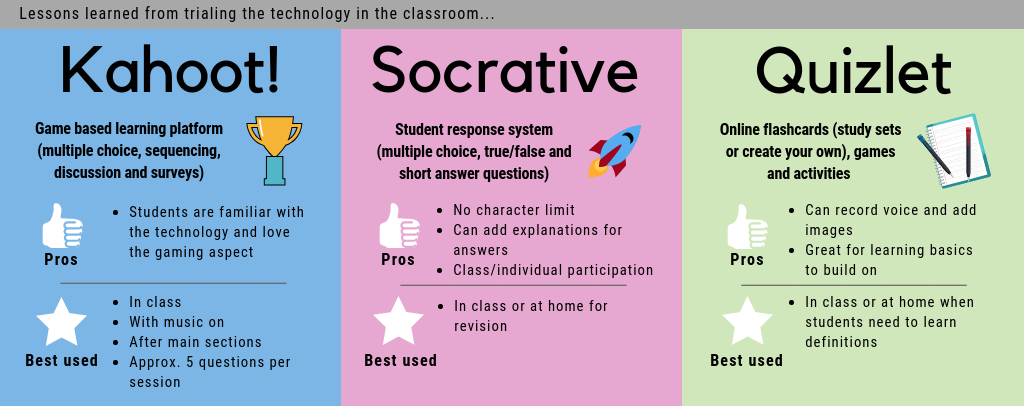Do you understand?: Ways to check understanding in the classroom

Do you understand this concept?
Does anyone have any questions?
Have you ever asked your class questions like these, received a room full of shy smiles or nods, and moved on only for it to become obvious that a number of the students had not grasped the basics and needed further explanation?
While getting your students to pay attention can be a challenge, ensuring they have understood key concepts can be even more difficult. Listening does not equate with understanding and, as teachers, the sooner we can get a real feel for their actual level of understanding, the more we can help them succeed as students.
You can watch the full recording of Kimi Anderson’s presentation on checking for understanding here. Keep ready for a summary of the ideas below.
Below are three simple strategies that you can use in the classroom to check for understanding.
Strategy 1. Using the blended learning approach
When it comes to gauging the level of understanding and increasing engagement, there are three tools that I have tried and tested and would highly recommend: Kahoot!, Socrative and Quizlet.
I used these tools with the aim to increase student engagement and understanding by embedding technology in the classroom. By observing the real-time data that these tools provide, you are able to get a sense of whether the class has understood the topic before moving on. You can also use this data to steer the lesson by either moving onto the next concept or explaining the concept again with a different approach if needed.
See below for a summary of the pros and recommendations for how to best use the technology.
Strategy 2. Opting for group work over individual work
Originally, my in-class tutorial activities were conducted with the same groups of 3-5 students as allocated in their assessment task groups. This group configuration, however, revealed the following challenges:
- It was too easy for individuals to hide in the large group; students would all agree with each other so they didn’t have to go in depth to explain their level of understanding.
- Some individuals became complacent as they were in the same group as allocated for the assessment task.
By changing the group work configurations to pairs and by shifting the pattern of when group work is conducted, I have seen some positive improvements:
- Pairs are easier to mix up into groups with the comfort of still having a ‘buddy’.
- By holding important activities right before breaks, students who understand the task can take a break while students who are having difficulties can use the break time to be supported.
Tasks where pair work can be useful include:
- Where one student defines a term and the other has to provide examples
- The pair critique each other’s work to demonstrate how well they listen to others
- Demonstrations which require two people
- Activities where one is the scribe and one is the presenter.
Strategy 3. Setting aside time for additional support with homework and assessments
It’s often too late to assist students when they have submitted their work, even though they didn’t properly understand the homework and assignment requirements. Here are some ways to help students with their homework and assignments:
- Pre-class: Ask students to bring an example relating to the next lesson so they have to do some light research before coming to class. Another way to gauge students’ understanding is to create a short poll (e.g., Poll Everywhere) rather than assigning a pre-reading task.
- In-class: Ask students to complete as much as their homework and/or assignments as possible, or jot down bullet points as to what they will include in their homework answers or how they will improve it. While students are completing this activity, you can observe how they are going by monitoring the room.
- After class: Include reflective type questions and encourage students to share their reflections in class.
To continue the conversation, contact Kimi Anderson, or share your thoughts and ideas about ways to check understanding via Yammer, Twitter or LinkedIn.

